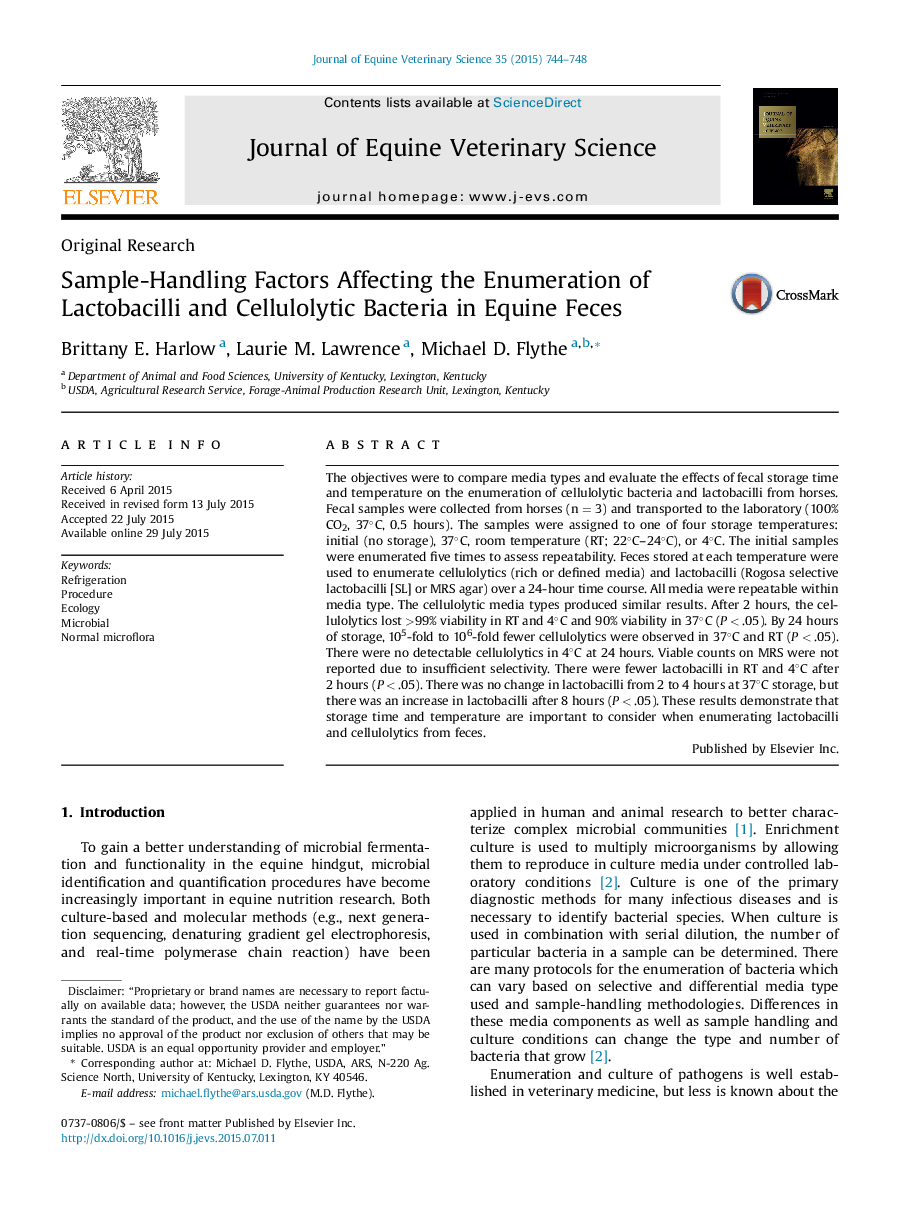| Article ID | Journal | Published Year | Pages | File Type |
|---|---|---|---|---|
| 10961229 | Journal of Equine Veterinary Science | 2015 | 6 Pages |
Abstract
The objectives were to compare media types and evaluate the effects of fecal storage time and temperature on the enumeration of cellulolytic bacteria and lactobacilli from horses. Fecal samples were collected from horses (n = 3) and transported to the laboratory (100% CO2, 37°C, 0.5 hours). The samples were assigned to one of four storage temperatures: initial (no storage), 37°C, room temperature (RT; 22°C-24°C), or 4°C. The initial samples were enumerated five times to assess repeatability. Feces stored at each temperature were used to enumerate cellulolytics (rich or defined media) and lactobacilli (Rogosa selective lactobacilli [SL] or MRS agar) over a 24-hour time course. All media were repeatable within media type. The cellulolytic media types produced similar results. After 2 hours, the cellulolytics lost >99% viability in RT and 4°C and 90% viability in 37°C (P < .05). By 24 hours of storage, 105-fold to 106-fold fewer cellulolytics were observed in 37°C and RT (P < .05). There were no detectable cellulolytics in 4°C at 24 hours. Viable counts on MRS were not reported due to insufficient selectivity. There were fewer lactobacilli in RT and 4°C after 2 hours (P < .05). There was no change in lactobacilli from 2 to 4 hours at 37°C storage, but there was an increase in lactobacilli after 8 hours (P < .05). These results demonstrate that storage time and temperature are important to consider when enumerating lactobacilli and cellulolytics from feces.
Related Topics
Life Sciences
Agricultural and Biological Sciences
Animal Science and Zoology
Authors
Brittany E. Harlow, Laurie M. Lawrence, Michael D. Flythe,
